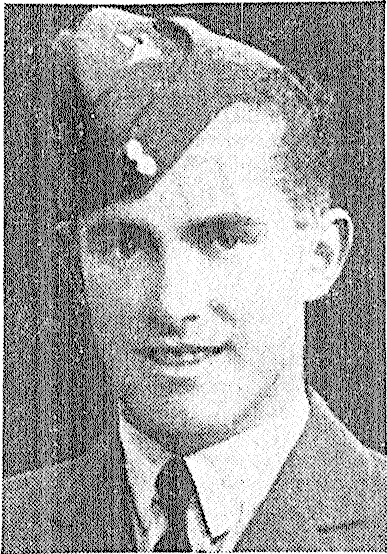Post by Dave Homewood on Apr 25, 2023 16:34:43 GMT 12
ATLANTIC FLIGHT
AUCKLAND PILOT
COMMAND OF LARGE BOEING
A RECORD TRIP MADE
A young Aucklander, Flying-Officer lan Patterson, aged 23, was one of the Royal Air Force officers honoured by special selection to fly the first of the American-built Boeing "flying fortress" bombers across the Atlantic for service against the Germans. A cablegram received by his father, Mr. John Patterson, of Aratonga Avenue, One Tree Hill, stated that he had arrived in Britain after a record crossing.
Flying-Officer Patterson had his introduction to aviation in 1937, when he was a finalist in a flying scholarship contest conducted by the Auckland Aero Club under the auspices of the New Zealand Herald. He joined the Royal New Zealand Air Force in 1938, and, after training at Mangere and Wigram, transferred to the Royal Air Force in February, 1939. After further training, Flying-Officer Patterson was posted to a Coastal Command squadron and early in the war was credited with the sinking of a German submarine off the coast of Scotland.
With other specially selected Royal Air Force officers. Flying-Officer Patterson was sent to the United States under orders to command a machine for an Atlantic flight, although his father did not then know that the machine was to be one of those which comprised the first deliveries of Boeings B-17C to Britain.
Flying-Officer Patterson spent several months in California preparing for his new duty, and it was while he was there that the B-17 C succeeded the B-17B as the most modern of the flying fortress types, its engine-power being increased by 200 additional horse-power in all of its four engines.
Recent letters and cablegrams received by Mr. Patterson indicated that his son would shortly be setting off with the other machines in the delivery flight to Britain and a fortnight ago he found that it had started.
Flying-Officer Patterson's letters also paid tribute to the generosity of an English family living at Palm Springs. Their hospitality and kindness extended to placing 20 dollar toll calls right across the continent to learn of his safe arrival at every port of call on the flight to Canada.

FLYING-OFFICER I. PATTERSON
NEW ZEALAND HERALD, 24 APRIL 1941
AUCKLAND PILOT
COMMAND OF LARGE BOEING
A RECORD TRIP MADE
A young Aucklander, Flying-Officer lan Patterson, aged 23, was one of the Royal Air Force officers honoured by special selection to fly the first of the American-built Boeing "flying fortress" bombers across the Atlantic for service against the Germans. A cablegram received by his father, Mr. John Patterson, of Aratonga Avenue, One Tree Hill, stated that he had arrived in Britain after a record crossing.
Flying-Officer Patterson had his introduction to aviation in 1937, when he was a finalist in a flying scholarship contest conducted by the Auckland Aero Club under the auspices of the New Zealand Herald. He joined the Royal New Zealand Air Force in 1938, and, after training at Mangere and Wigram, transferred to the Royal Air Force in February, 1939. After further training, Flying-Officer Patterson was posted to a Coastal Command squadron and early in the war was credited with the sinking of a German submarine off the coast of Scotland.
With other specially selected Royal Air Force officers. Flying-Officer Patterson was sent to the United States under orders to command a machine for an Atlantic flight, although his father did not then know that the machine was to be one of those which comprised the first deliveries of Boeings B-17C to Britain.
Flying-Officer Patterson spent several months in California preparing for his new duty, and it was while he was there that the B-17 C succeeded the B-17B as the most modern of the flying fortress types, its engine-power being increased by 200 additional horse-power in all of its four engines.
Recent letters and cablegrams received by Mr. Patterson indicated that his son would shortly be setting off with the other machines in the delivery flight to Britain and a fortnight ago he found that it had started.
Flying-Officer Patterson's letters also paid tribute to the generosity of an English family living at Palm Springs. Their hospitality and kindness extended to placing 20 dollar toll calls right across the continent to learn of his safe arrival at every port of call on the flight to Canada.

FLYING-OFFICER I. PATTERSON
NEW ZEALAND HERALD, 24 APRIL 1941




